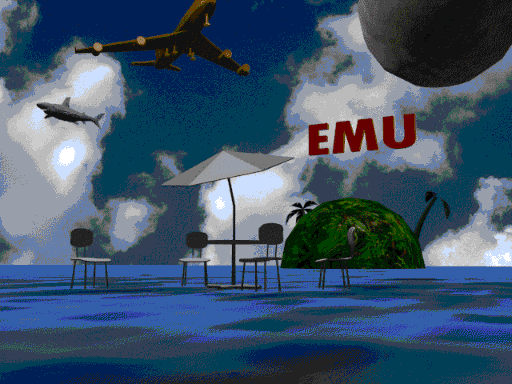Until the development of easy to use, graphical web browsers, Internet use
was largely limited to use by large institutions and those who worked for them.
This reflected the taxpayer funded academic, military and non commercial dimension
of the Internet Since its inception the Internet had been conceived more as
an aide to the sharing of information than. To send email required a knowledge
of unix, and connection to the Internet was often a process of finding out how
to use it from experts. Generally speaking, the culture of Computer Science
is empirical and utilitarian. Unless the purpose of the Internet could be explained
in terms of direct relevance to computer science, assistance from these departments
was seldom made easily available. A culture clash between the humanities and
the sciences often underpinned a resistance to assisting artists, animators
and non scientists using facilitate such as the Internet in the early 1990s.
This eventually changed.
At Swinburne university of technology in 1990, I looked into adapting AIM's
Internet connections for use with Macintosh SE computers, and found it a rather
drawn out experience of asking computer science people at the university how
best to use the Internet I eventually taught myself some basic UNIX commands,
such that doing email, and exploring WAIS, GOPHERNET and other Internet tools
became second nature.
My First Experience with the World Wide Web
When the world wide web browser Mosaic first arrived at Swinburne, I was able
to see the full potential of the graphical user interface it afforded in terms
of my long term research interests.
The first web site I saw was a graphical 'tour' of the computer science department.
With the eventual arrival of web browser tools such as 'the palace' in 1994,
it became possible to explore the use of graphically oriented tools to create
online spaces. In 1995 I developed a 'palace' site with which to test the ideas
of EMU. These were done using graphics generated by means of 3D Studio based
computer graphics packages.
I had been shown "the Palace" by Nick West at NYU in 1994, and looked into
the possibility of adapting for a multi-user environment.
I developed about six palace backgrounds, with the assistance of Mr. Harry
Sokol at Cinemedia's RMIT research facility. I found it difficult however to
sufficiently publicist the site among my then rather limited list of Internet
aware friends and colleagues.
|
EMU
PALACE SITE SCREEN SHOTS
circa
1996, 1997, by David Cox (generated in 3D
Studio Release 4)

Above
was the main palace 'home' where visitors could congregate. While working
at RMIT in Melbourne, I spent many hours in this space with my brother
Richard, who in real life lives in Edinburgh,Scotland.
|

The Palace
area was designed so that visitors could 'fly' up to different settings.
These acted as backdrops for Palace users to have conversations. These
were still images, to which users would 'hyper-jump'.
The surreal
objects were inspired by the role of the central 'penguin' in Brygg
Ullmer's experiments in the spatialisation of web content. The function
of the latter was to offer a landmark for spatial orientation for the
users of the shared space.
|

The yellow duck
was a homage to Robert Venturi, who described vernacular architecture
(which was themed to look like something other than a building) 'ducks'
|

The Eiffel Tower
- a meeting place of global fame
|


